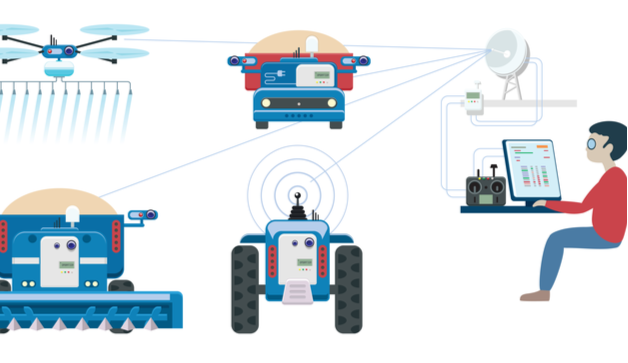
There is still a lot of excitement around artificial intelligence. Experts come together at numerous conferences to explore the possibilities and potentialities of AI and the effects it will have on the world. AI has been positioned as a major part of the present and the future for the technology. The possibilities regarding artificial intelligence are mind-numbing, and almost everyone is thrilled to see how technology can be used in all aspects of life.
We now have self-driving cars, autonomous drones, and mechanization in agriculture just to name a few applications. Different companies are also applying the use of Artificial Intelligence in their operations. People are using drones to make deliveries. There are countries that have seen the benefits of drones when delivering Medical Supplies to remote areas.
The best autonomous drones can accomplish difficult tasks in a very short time. A good example is a farmer who uses drones to monitor sheep, inspect the farm, track deliveries, among other uses.
Let us delve into how AI technology will be used in autonomous drones:
Nano drones
Researchers and scientists from ETH Zurich and the University of Bologna have made a breakthrough with the Nano drones. The drone can fly without human assistance and it does not need any external sensing or computing for it to work. The autonomous microdrones are small and light making them ideal for use in areas like logistics, industrial inspections, natural disaster assistance, and security, among others.
R1 drones
The R1 drone is a brainchild of a start-up in Redwood City California. It looks like a quadcopter and can capture 4K video of a subject. Unlike the more traditional drones which use GPS, the R1 uses a custom computer vision system.
The 4K videography is possible due to 13 onboard cameras which allow for planning and real-time mapping. It can self-maneuver in complex places and can comfortably avoid obstacles. The fascinating part about it is that it does not come with a controller.
Dronesense
Dronesense uses artificial intelligence to capture raw data that the police, emergency teams, and fire department can turn into insights they can act. The Ops Centre helps the different users to collaborate so that they can see what each drone is doing in real-time.
Dronesense is especially useful regarding public safety. If there is a threat, SWAT teams will use the information from the software to gather intelligence from the scenes.
In situations where natural disasters like hurricanes and tornadoes occur, Dronesense can give relevant information on the extent of damage, thereby allowing the relevant teams to take appropriate action. The software also has thermal imaging which is very useful when locating missing persons.
Deep learning neural network – Neurala
Neurala will help drones identify persons of interest in crowds. It will only take it 20 minutes to understand an individual’s image, after which it can pick out an individual from a crowd.
The Deep learning neural network can also inspect industrial equipment and telephone Towers, to give reports on any damage.
One company that is currently using Neurala drones is the Lindbergh Foundation. The artificial intelligence in combination with drones is used to combat poaching of elephants in Africa. The image recognition technology will spot poachers from quite a distance, thus allowing the company to alert the relevant authorities.
The image recognition feature also allows for the monitoring of elephant herds.
Final thoughts
The pairing of artificial intelligence together with autonomous drones could revolutionize the world. The combination of the two allows for efficiency in the use of data in different areas such as disaster relief, construction, and agriculture among others.
While before, the functionality of drones was basically to capture images, now with artificial intelligence, autonomous drones are better able to track, monitor, analyze, and give real-time feedback, without the need for a human being to control them. We can expect better automation and solutions through technological innovations, thereby adding the value of drone use in many aspects of life.








